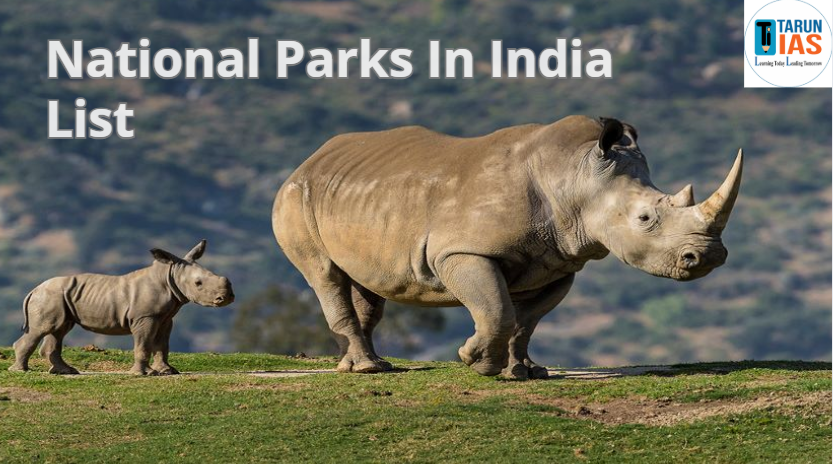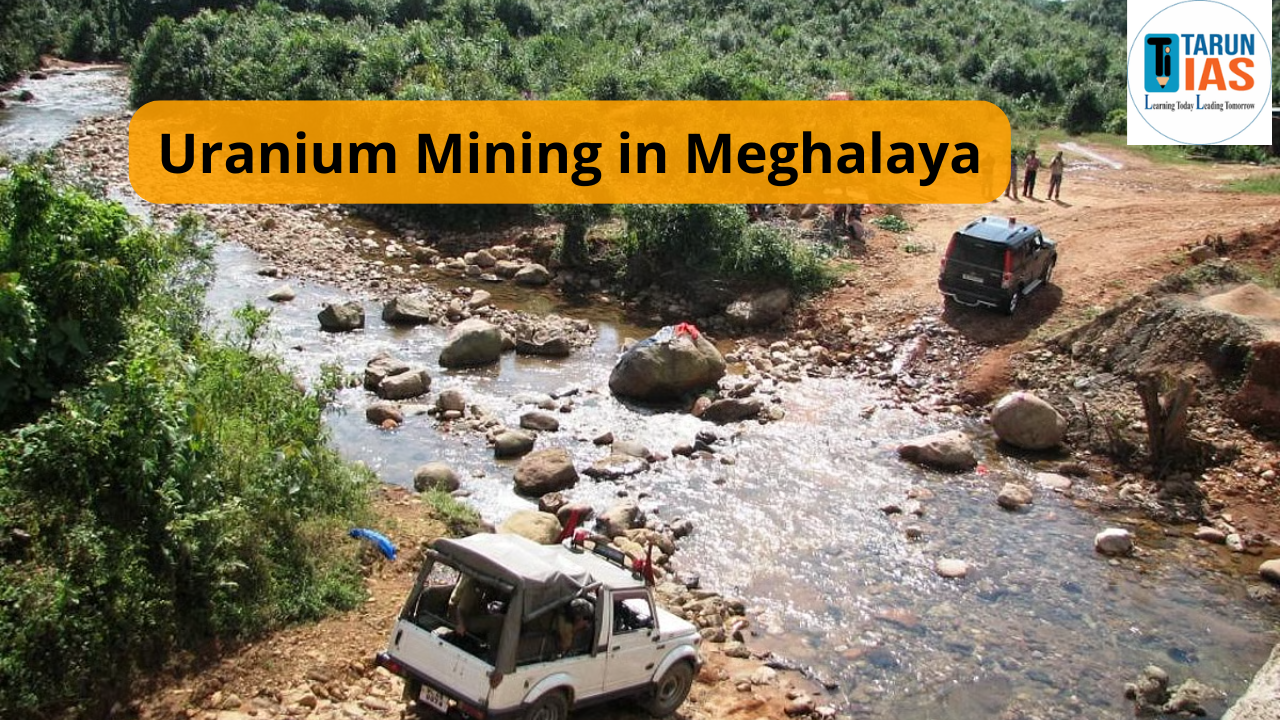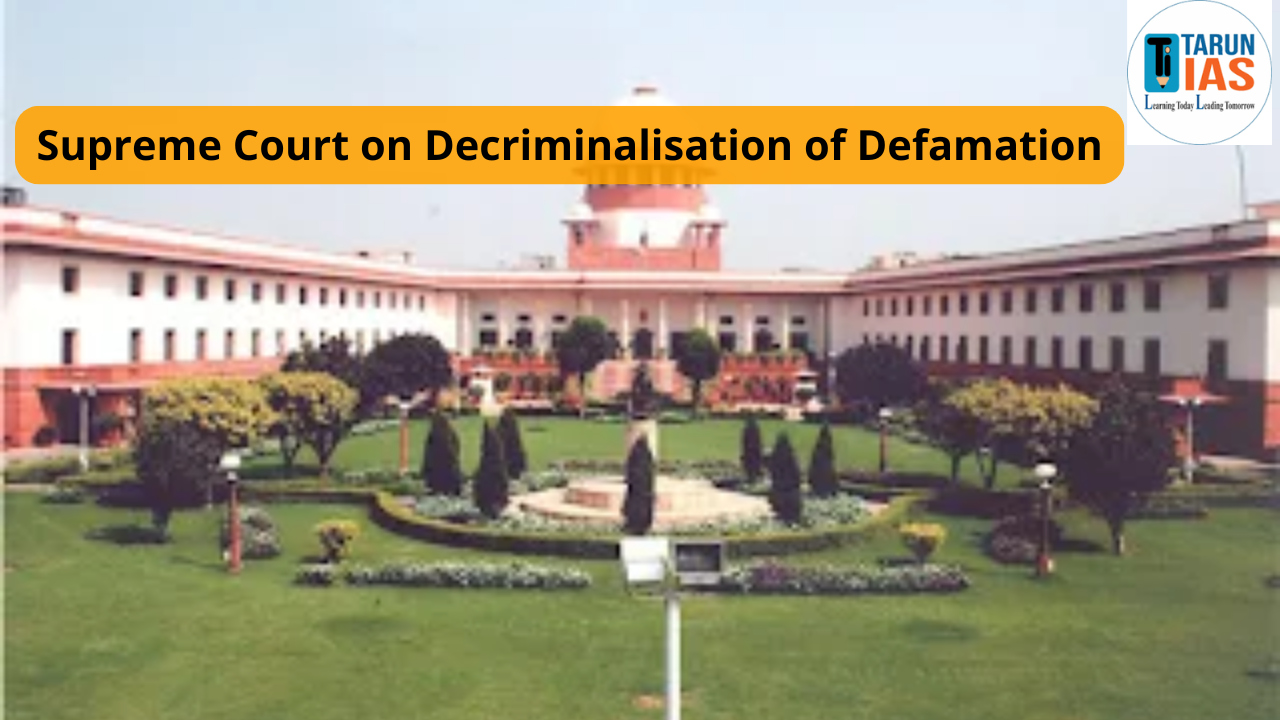There are 106 existing national parks in India covering an area of 44,402.95 km², which is 1.35% of the geographical area of the country (National Wildlife Database Centre, Nov. 2023). In addition to the above, 75 national parks covering an area of 16,608 km² are proposed in the Protected Area Network Report (Rodgers & Panwar, 1988).
What are National Parks in India?
National Parks in India are designated protected areas established under the Wildlife Protection Act in 1972, aimed at conserving wildlife and their habitats. These areas are free from human activities like hunting, poaching, and cultivation, unless expressly permitted by the Chief Wildlife Warden. They fall under IUCN Category II — primarily focused on ecosystem protection and recreation.
Also Read: Tiger Reserves in India
History of National Parks in India
The concept of National Parks in India began during the British era with the establishment of Hailey National Park in 1936 in the United Provinces (now Uttarakhand), which was later renamed Jim Corbett National Park to honor the legendary hunter-turned-conservationist. This marked the beginning of India’s formal wildlife conservation efforts. However, until 1970, India had only five national parks, and the concept remained limited in scope and impact. The turning point came with the enactment of the Wildlife Protection Act in 1972, which provided a legal framework for the protection of wild animals, birds, and plants, and paved the way for the structured development of protected areas.
After 1972, the government began actively designating more regions as national parks in India to protect diverse ecosystems, endangered species, and natural habitats. Landmark initiatives like Project Tiger (1973) further reinforced the importance of such protected areas.
As of 2025, India boasts 106 national parks, collectively covering an area of 44,402.95 square kilometers, which constitutes approximately 1.35% of the country’s geographical area. This remarkable growth highlights India’s continued commitment to biodiversity conservation, ecological balance, and sustainable development.
Also Read: Major Rivers in India
National Parks in India 2025 Overview
India is home to a rich network of 106 national parks as of 2025, representing the country’s deep commitment to environmental conservation, biodiversity protection, and eco-tourism. These parks serve as safe havens for endangered species, rare ecosystems, and a wide variety of flora and fauna. The first park in India was established in 1936, and since then, the protected area network has expanded significantly in both size and ecological importance.
From the high-altitude wilderness of Hemis National Park in Ladakh to the tiny yet ecologically rich South Button Island National Park in the Andaman Islands, India’s national parks span diverse landscapes. Madhya Pradesh leads the way with the highest number of national parks (11), reflecting its central role in India’s conservation story.
| Feature | Details |
| Total National Parks | 106 (As of 2025) |
| First National Park | Jim Corbett National Park (1936 |
| Largest National Park | Hemis National Park, Ladakh (4,400 km²) |
| Smallest National Park | South Button Island NP, Andaman (5 km²) |
| Newest National Park | Dehing Patkai NP, Assam (2021) |
| State with Most National Parks | Madhya Pradesh (11) |
| Geographical Coverage | 1.35% of India’s area |
Also Read: Dams In India
State-Wise List of National Parks in India List 2025
There are 106 existing national parks in India covering an area of 44,402.95 km2, which is 1.35% of the geographical area of the country (National Wildlife Database Centre, Nov. 2023). In addition to the above 75 National Parks covering an area of 16,608 km2 are proposed in the Protected Area Network Report (Rodgers & Panwar, 1988).
State-Wise List of National Parks in India List 2025 Are;
| State & UT | State Area (km²) | No. of NP | Area (km²) | % of State Area |
| 1. Andhra Pradesh | 160229 | 3 | 1368.87 | 0.85 |
| 2. Arunachal Pradesh | 83743 | 2 | 2,290.82 | 2.74 |
| 3. Assam | 78438 | 7 | 2,664.58 | 3.40 |
| 4. Bihar | 94163 | 1 | 335.65 | 0.36 |
| 5. Chhattisgarh | 135191 | 3 | 2,899.08 | 2.14 |
| 6. Goa | 3702 | 1 | 107.00 | 2.89 |
| 7. Gujarat | 196022 | 4 | 480.12 | 0.24 |
| 8. Haryana | 44212 | 2 | 48.25 | 0.11 |
| 9. Himachal Pradesh | 55673 | 5 | 2,256.28 | 4.05 |
| 10. Jharkhand | 79714 | 1 | 226.33 | 0.28 |
| 11. Karnataka | 191791 | 5 | 2,794.05 | 1.46 |
| 12. Kerala | 38863 | 6 | 558.16 | 1.44 |
| 13. Madhya Pradesh | 308245 | 11 | 4349.14 | 1.41 |
| 14. Maharashtra | 307713 | 6 | 1,273.60 | 0.41 |
| 15. Manipur | 22327 | 2 | 140.00 | 0.63 |
| 16. Meghalaya | 22429 | 2 | 267.48 | 1.19 |
| 17. Mizoram | 21081 | 2 | 150.00 | 0.71 |
| 18. Nagaland | 16579 | 1 | 202.02 | 1.22 |
| 19. Odisha | 155707 | 2 | 990.70 | 0.64 |
| 20. Punjab | 50362 | 0 | 0.00 | 0.00 |
| 21. Rajasthan | 342239 | 5 | 3,947.07 | 1.15 |
| 22. Sikkim | 7096 | 1 | 1,784.00 | 25.14 |
| 23. Tamil Nadu | 130058 | 5 | 827.51 | 0.64 |
| 24. Telangana | 114840 | 3 | 19.62 | 0.02 |
| 25. Tripura | 10486 | 2 | 36.71 | 0.35 |
| 26. Uttar Pradesh | 240928 | 1 | 490.00 | 0.20 |
| 27. Uttarakhand | 53483 | 6 | 4,915.02 | 9.19 |
| 28. West Bengal | 88752 | 6 | 1,981.48 | 2.23 |
| 29. Andaman & Nicobar | 8249 | 6 | 1,216.95 | 14.75 |
| 30. Chandigarh | 114 | 0 | 0.00 | 0.00 |
| 31. Dadra and Nagar Haveli and Daman and Diu | 603 | 0 | 0.00 | 0.00 |
| 32. Delhi | 1483 | 0 | 0.00 | 0.00 |
| 33. Jammu & Kashmir | 163090 | 4 | 2432.45 | 1.49 |
| 34. Ladakh | 59146 | 1 | 3350.00 | 5.66 |
| 35. Lakshadweep | 32 | 0 | 0.00 | 0.00 |
| 36. Puducherry | 480 | 0 | 0.00 | 0.00 |
| TOTAL | 32,87,263 | 106 | 44,402.95 | 1.35 |
Also Read: Biosphere Reserves in India
Andaman And Nicobar Islands
- Campbell Bay National Park
- Galathea National Park
- Mahatma Gandhi Marine National Park
- Mount Harriet National Park
- Rani Jhansi Marine National Park
- Saddle Peak National Park
Andhra Pradesh
- Papikonda National Park
- Rajiv Gandhi National Park (Rameswaram)
- Sri Venkateswara National Park
Arunachal Pradesh
- Mouling National Park
- Namdapha National Park
Assam
- Dibru-Saikhowa National Park
- Dihing Patkai National Park
- Raimona National Park
- Kaziranga National Park
- Manas National Park
- Nameri National Park
- Orang National Park
- Sikhna Jwhwlao National Park
Bihar
- Valmiki National Park
Chhattisgarh
- Guru Ghasidas National Park (Sanjay)
- Indravati National Park
- Kanger Ghati National Park
Goa
- Mollem National Park
Gujarat
- Blackbuck National Park (Velavadar)
- Gir Forest National Park
- Marine National Park (Gulf of Kutch)
Haryana
- Kalesar National Park
- Sultanpur National Park
Himachal Pradesh
- Great Himalayan National Park
- Inderkilla National Park
- Khirganga National Park
- Pin Valley National Park
- Simbalbara National Park
Jammu And Kashmir
- Dachigam National Park
- Kishtwar National Park
- Kazinag National Park
- City Forest National Park (Salim Ali)
Jharkhand
- Betla National Park
Karnataka
- Anshi National Park
- Bandipur National Park
- Bannerghatta National Park
- Kudremukh National Park
- Nagarhole National Park
Kerala
- Anamudi Shola National Park
- Eravikulam National Park
- Mathikettan Shola National Park
- Pambadum Shola National Park
- Periyar National Park
- Silent Valley National Park
Ladakh
- Hemis National Park
Madhya Pradesh
- Bandhavgarh National Park
- Dinosaur Fossils National Park
- Ghughua Fossil National Park
- Kanha National Park
- Kuno National Park
- Madhav National Park
- Panna National Park
- Pench National Park
- Sanjay National Park
- Satpura National Park
- Van Vihar National Park
Maharashtra
- Chandoli National Park
- Gugamal National Park
- Nawegaon National Park
- Sanjay Gandhi National Park
- Tadoba Andhari National Park
- Pench National Park (Jawaharlal Nehru)
Manipur
- Keibul Lamjao National Park
- Shiroi National Park
Meghalaya
- Balphakram National Park
- Nokrek National Park
Mizoram
- Murlen National Park
- Phawngpui Blue Mountain National Park
Nagaland
- Intangki National Park
Odisha
- Bhitarkanika National Park
- Simlipal National Park
Rajasthan
- Desert National Park
- Keoladeo Ghana National Park
- Mukundra Hills National Park
- Ranthambore National Park
- Sariska Tiger Reserve
Sikkim
- Khangchendzonga National Park
Tamil Nadu
- Indira Gandhi Sanctuary and National Park (Annamalai)
- Guindy National Park
- Gulf of Mannar Marine National Park
- Mudumalai National Park
- Mukurthi National Park
Telangana
- Mahavir Harina Vanasthali National Park
- Kasu Brahmananda Reddy National Park
- Mrugavani National Park
Tripura
- Bison (Rajbari) National Park
- Clouded Leopard National Park
Uttar Pradesh
- Dudhwa National Park
Uttarakhand
- Gangotri National Park
- Govind Pashu Vihar National Park
- Jim Corbett National Park
- Nanda Devi National Park
- Rajaji National Park
- Valley of Flowers National Park
West Bengal
- Buxa Tiger Reserve
- Gorumara National Park
- Jaldapara National Park
- Neora Valley National Park
- Singalila National Park
- Sundarbans National Park
Importance of National Parks in India
National Parks in India serve as vital pillars of environmental state-wise national parks in India, ecological balance, and sustainable development. Their role extends far beyond being just protected areas—they are wildlife sanctuaries, hubs for scientific research, cultural landmarks, and engines of local economy through eco-tourism. Here’s a detailed look at their multifaceted importance.
- Biodiversity Conservation: Protect endangered species like Bengal Tiger (Sundarbans), Asiatic Lion (Gir), One-horned Rhino (Kaziranga).
- Preserve Ecosystems: Maintain ecological balance, regulate water cycles, reduce soil erosion.
- Eco-tourism & Awareness: Generate employment and promote conservation education.
- Scientific Research: Serve as laboratories for ecological, botanical, and zoological studies.
- Cultural Significance: Many parks are linked with tribal communities and local traditions.
Some Famous National Parks in India 2025
National Parks in India are celebrated for their rich biodiversity, unique landscapes, and vital role in conservation. Each park has its specialty, offering protection to iconic species and habitats. Here’s a snapshot of some of the most famous national parks in India in 2025, their key features, and associated states.
| National Park | Famous For | State |
| Jim Corbett NP | First National Park, Tigers | Uttarakhand |
| Kaziranga NP | One-horned Rhinoceros | Assam |
| Hemis NP | Snow Leopards, Largest NP | Ladakh |
| Sundarbans NP | Bengal Tiger, Mangroves | West Bengal |
| Gir Forest NP | Asiatic Lions | Gujarat |
| Kanha NP | Barasingha, Jungle Book inspiration | Madhya Pradesh |
| Valley of Flowers NP | Alpine Flowers, UNESCO Site | Uttarakhand |
| Bandipur NP | Tigers, Part of Nilgiri Reserve | Karnataka |
| Periyar NP | Elephants, Eco-tourism | Kerala |
| Keoladeo Ghana NP | Migratory Birds | Rajasthan |
Conclusion
National Parks in India are not just pockets of preserved wilderness—they are vibrant, living ecosystems that reflect the country’s deep-rooted commitment to biodiversity, conservation, and sustainable coexistence with nature. With 106 national parks spread across varied geographies—from Himalayan heights to coastal mangroves—they form the backbone of India’s environmental and ecological framework.
As environmental challenges like climate change, habitat loss, and species extinction continue to rise, the role of national parks becomes more critical than ever. These protected areas act as sanctuaries for wildlife, lungs for the planet, classrooms for learners, and livelihood hubs for local communities through eco-tourism and conservation initiatives.
National Parks in India FAQs
What is the purpose of National Parks in India?
National Parks in India are established primarily for the protection of wildlife, preservation of biodiversity, and conservation of natural habitats. They also promote eco-tourism, scientific research, and environmental education.
How are National Parks in India different from Wildlife Sanctuaries?
While both aim at wildlife conservation, National Parks in India have stricter regulations—no human activity like grazing or habitation is allowed. In contrast, controlled activities may be permitted in wildlife sanctuaries.
Which is the most visited National Park in India?
Jim Corbett National Park in Uttarakhand is one of the most visited National Parks in India, popular for tiger sightings and eco-tourism.
Are National Parks in India open throughout the year?
No, most National Parks in India remain closed during the monsoon season (typically July to September) to ensure safety and allow wildlife to breed undisturbed.
How can tourists explore National Parks in India responsibly?
Visitors should follow park rules, avoid plastic use, stay on designated trails, and maintain silence. Responsible tourism in National Parks in India supports conservation and minimizes human impact on fragile ecosystems.















